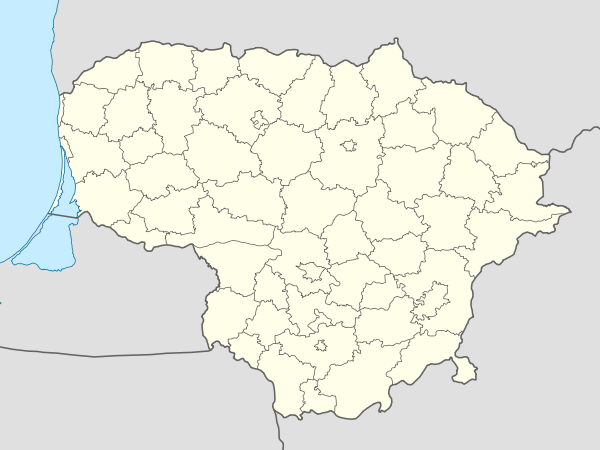Ablinga
| Ablinga | |
|---|---|
| Village | |
|
Wooden sculptures in Ablinga | |
 Ablinga Location of Ablinga | |
| Coordinates: 55°43′56″N 21°42′02″E / 55.73222°N 21.70056°ECoordinates: 55°43′56″N 21°42′02″E / 55.73222°N 21.70056°E | |
| Country |
|
| Ethnographic region | Lithuania Minor |
| County |
|
| Municipality | Klaipėda District Municipality |
| Eldership | Endriejavas eldership |
| Population (2001) | |
| • Total | 3 |
| Time zone | EET (UTC+2) |
| • Summer (DST) | EEST (UTC+3) |
Ablinga is a village in Lithuania, located 48 km (30 mi) east of Klaipėda. First mentioned in the 14th century, it had 87 residents in 1923, 97 in 1950, 57 in 1970 and 20 in 1979.[1] The 2001 census recorded village's population of 3 residents.[2]
On June 23, 1941, the second day of the Nazi invasion of Soviet Union, Nazi punitive squadron executed 42 villagers from Ablinga and nearby Žvaginiai (28 men and 14 women) and burned down the houses.[3] The motives for the mass killing are not entirely clear to this day. In 1972, in memory of the massacre a sculpture park was established on the Žvaginiai hill fort.[4] The ensemble consists of 30 wooden statues, carved by various Lithuanian folk artists (see dievdirbys) and measuring some 6 metres (20 ft) in height. The memorial, as the first monumental display of folk sculptures, was an important development in revival and modernization of the traditional Lithuanian art of wood carving and inspired other similar sculpture parks.[4]
References
- ↑ Zinkus, Jonas; et al., eds. (1985–1988). "Ablinga". Tarybų Lietuvos enciklopedija (in Lithuanian). I. Vilnius: Vyriausioji enciklopedijų redakcija. p. 10. LCC 86232954.
- ↑ Klaipėdos apskrities kaimo gyvenamosios vietovės ir jų gyventojai (PDF) (in Lithuanian). Vilnius: Department of Statistics to the Government of the Republic of Lithuania. 2003. p. 30. ISBN 9986-589-88-6.
- ↑ Zizas, Rimantas (2005). "Persecution of non-Jews citizens of Lithuania, murder of civilian population" (PDF). Murders of Prisoners of War and of Civilian Population in Lithuania in 1941–1944. The Crimes of the Totalitarian Regimes in Lithuania. The Nazi Occupation. 2. Margi raštai. pp. 24–25. ISBN 978-9986-09-297-1.
- 1 2 Saliklis, Ruta (1998). Sacred Wood: The Contemporary Lithuanian Woodcarving Revival. Chazen Museum of Art. pp. 27–28. ISBN 978-0-932900-43-2.
